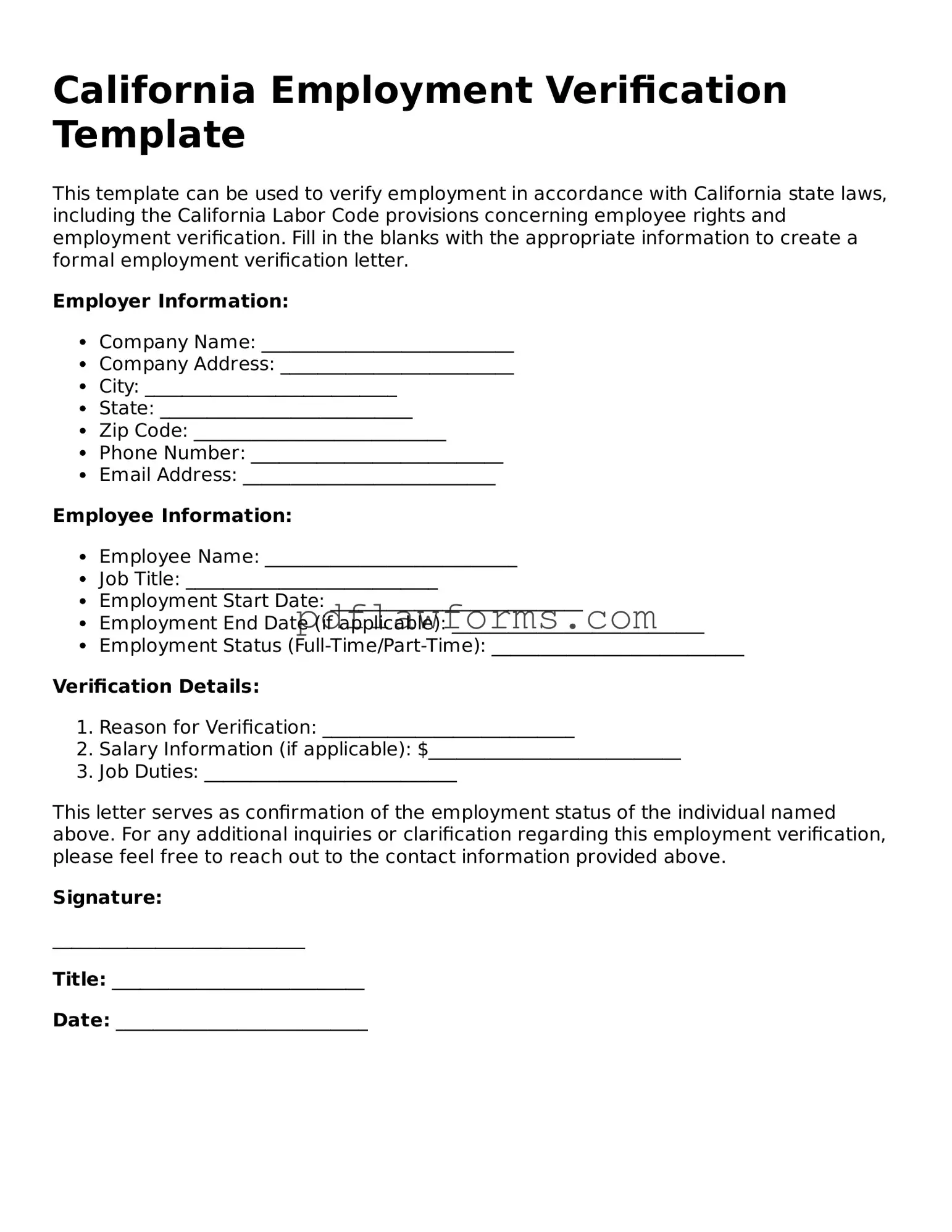Filling out the California Employment Verification form can seem straightforward, but many people make common mistakes that can delay the process. One frequent error is providing incomplete information. This includes leaving out crucial details such as the employee's start date or job title. When these sections are not fully filled out, it can lead to unnecessary back-and-forth communication, slowing down the verification process.
Another mistake is using incorrect or outdated information. Employers may forget to update their records or misremember details about an employee's tenure. This can create discrepancies that might raise red flags for whoever is reviewing the form. Always double-check to ensure that the information is current and accurate before submission.
Many individuals also overlook the importance of signatures. The form requires signatures from both the employer and the employee. Failing to include these can render the form invalid. It's a simple step, but one that can easily be missed, especially when rushing to complete the paperwork.
Additionally, some people neglect to provide proper documentation. Supporting documents, such as pay stubs or tax forms, may be necessary to back up the claims made on the Employment Verification form. Without these documents, the verification process could be delayed or even rejected.
Another common pitfall is misunderstanding the purpose of the form. Some individuals might think that the form is only for current employees, but it can also be used for former employees. Misinterpreting this can lead to unnecessary complications, especially if the verification is needed for a job application or a loan.
Lastly, failing to keep a copy of the completed form is a mistake that can have lasting effects. Having a copy for personal records is essential. If there are any questions or issues later, having that information readily available can save time and trouble. Keeping organized records is a good habit that can help avoid future headaches.
